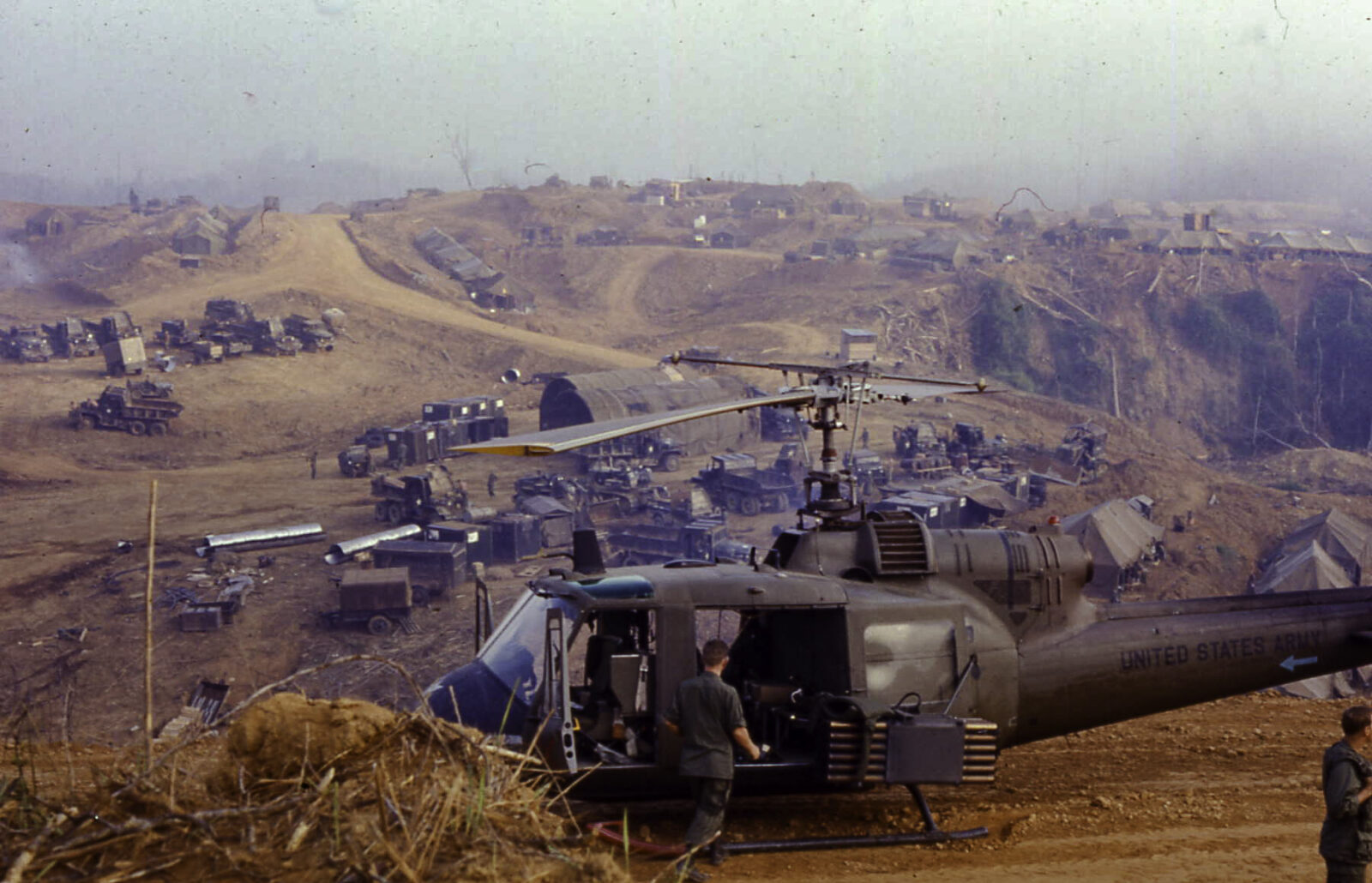FSB Blaze was established during spring 1969 to support operations into the A Shau Valley. The base played a key role in the fierce battle that came to be known as Hamburger Hill. It was originally opened for the previous operation into Dong Ngai which later became FSB Airborne. For those on their way to the A Shau Valley, FSB Blaze is just a quick stop off the road along the way.
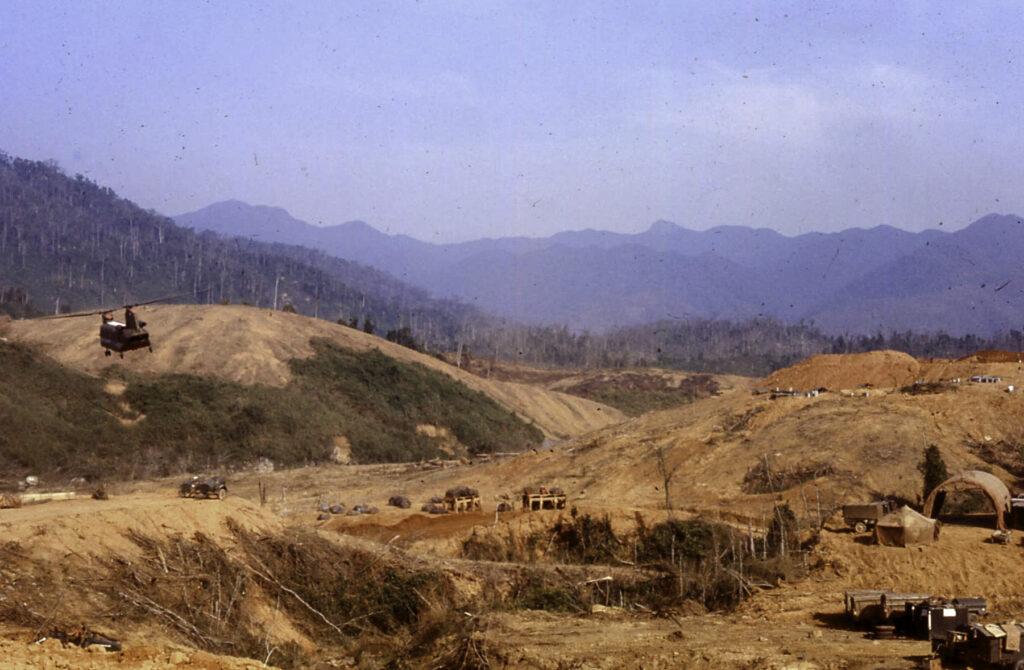
The base is located southwest of the Ta Luong pass (Đèo Tà Lương) which itself is located about 30 kilometers southwest of Hue. It was an ideal launch point to the valley less than 10 kilometers further west.
Background
As far as I know, the first time the base was used was for the operation going into Dong Ngai, later called Firebase Airborne, on the mountain ridges on the east border of the A Shau Valley. On April 25th, units from the 3/187th (The Rakkasans) 101st Airborne were lifted into the top of Dong Ngai to support a company from 2/17th Cavalry that had gotten into a heavy fight the day before in the valley below. The intent was that The Rakkasans would secure the hill and then start moving down to help the Cavalry troops.
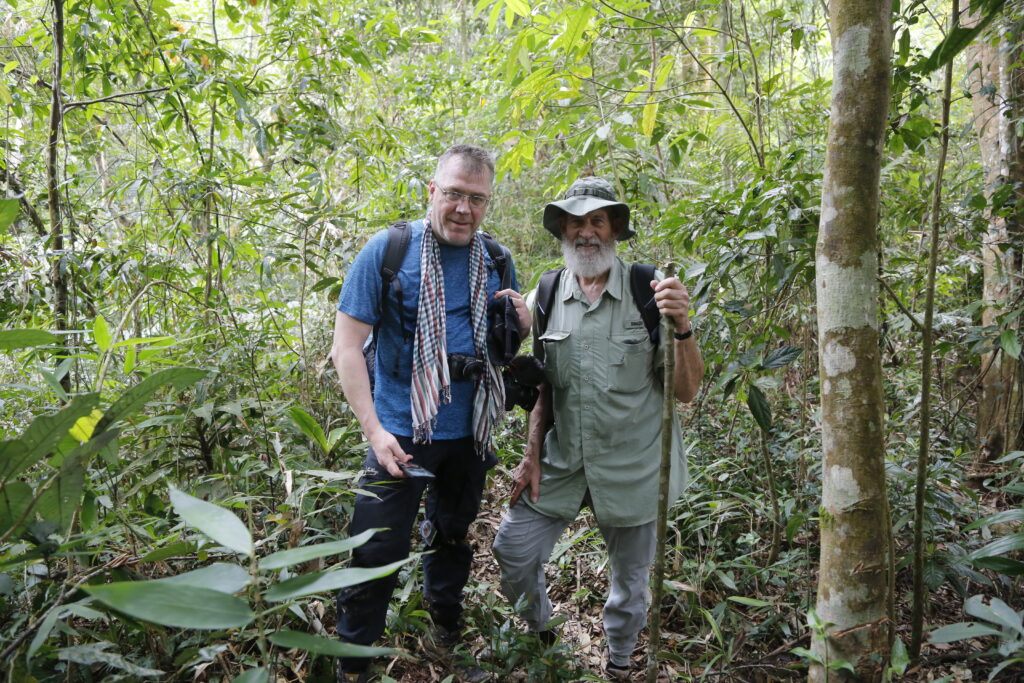
The battle that followed was a baptism of fire for the Rakkasans in terms of learning about the enormous presence of NVA troops in the A Shau Valley and how fiercely they would fight to keep their American adversaries out. To learn more about the battle, I recommend reading “The Crouching Beast” by Frank Boccia who was on the first chopper into Dong Ngai. Frank was a platoon leader in Bravo Company and only two weeks after this battle, he and the rest of The Rakkasans landed across the valley in order to move up and take Hill 937, later called Hamburger Hill.
You can also learn more about the battle of Hamburger Hill and The Rakkasans on this excellent website run by a colleague and friend of NamWarTravel.
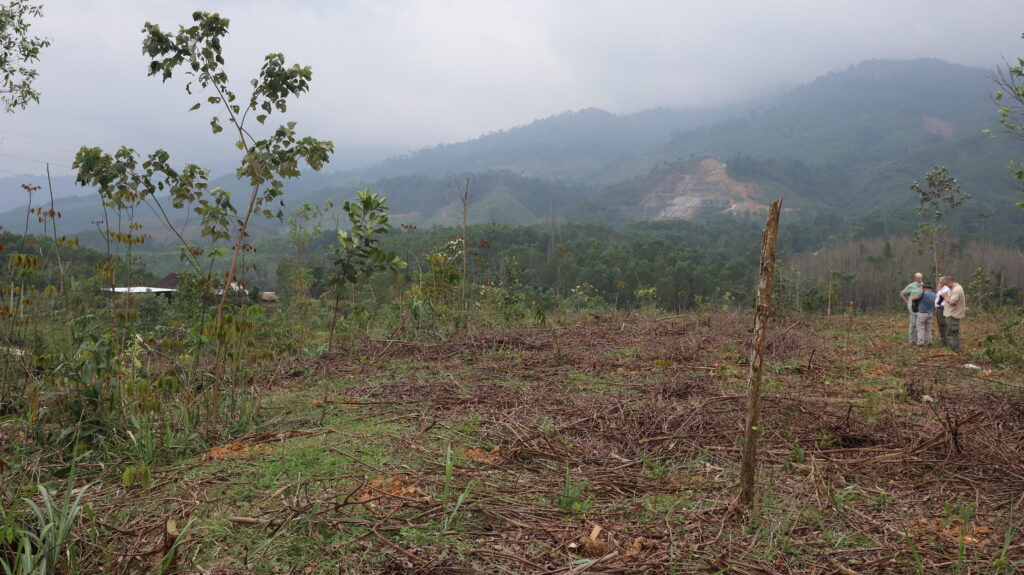
As The Rakkasans came back to Blaze, two weeks later, to prepare for the launch on Hamburger Hill, Frank writes; “Blaze had changed substantially since we last had seen it; two weeks ago, it had been nothing more than a tawny orange smear surrounded by dun green jungle. Now it was recognizably a firebase; bunkers dotted the perimeter; bulldozers, levelers, back hoes and graders were growling about, excavating more bunker sites, levelling off yet another landing site or building a berm along the river.”
He continues; “there were five principal landing zones, and these were a hornets’ nest of Hueys, LOHs, ‘hooks, cranes and even the occasional Marine Sikorski.”
During my over twenty years of travelling in Vietnam, exploring war sites and other historical places, I have passed this site many times on my way to and from the A Shau Valley. In February 2023, I was finally going to visit FSB Blaze.
Leaving Hue
Early morning in Hue, we loaded up the van. Our small group consisted of Stephen and Ciarán, my compatriots in the NamWarTravel team, travelling with Mike Smith and John Snyder, two Rakkasans and Hamburger Hill veterans I have gotten to know over the years as I have researched the battle. With us was also our trusty pathfinder, Van Ngoc Vu, who runs Annam Tour. Our team has developed a close friendship with him over the years and he provides tour services across the former I Corps and even parts of II Corps. Few have the knowledge of war sites in the country that he has, and he has taken countless veterans and their families, back to the sites over the years.
Our main objective that day was of course Hamburger Hill, for John’s first trip back and Mike’s second. Read more about that visit here.
We also saw the chance to stop by the site of FSB Blaze. John and Mike had both had been through here in 1969 and I really wanted to see it with them. I had some conflicting coordinates from different sources, but they were all pointing to the area around Đèo Tà Lương, or Ta Luong pass, along QL49. On our way, we passed the sites of former bases such as Bastogne, Birmingham and Veghel. As we approached the site, we stopped by some houses along the road to talk to a couple of local women hanging around a shop with their children.
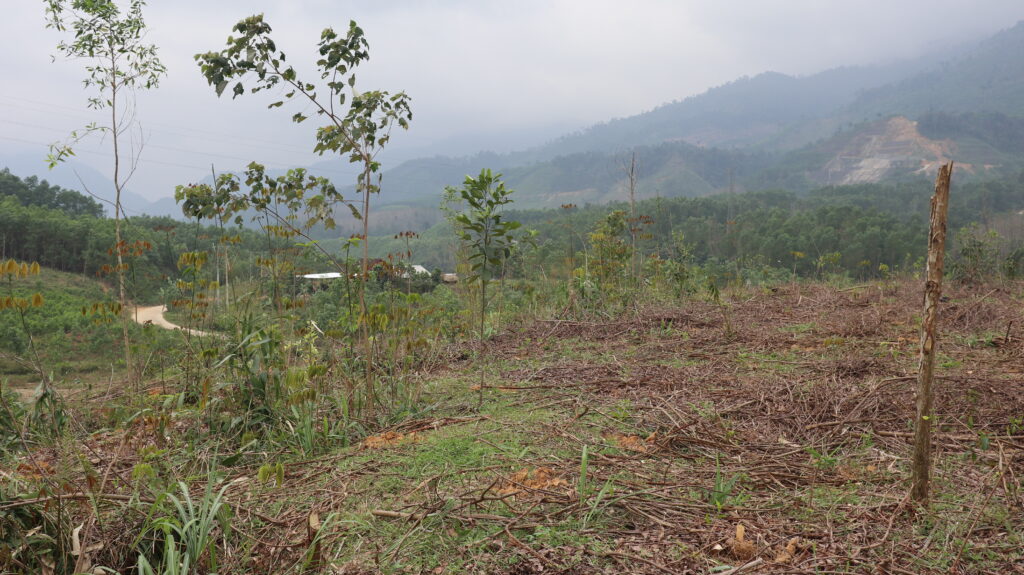
One of the ladies pointed down towards a flat area in the river valley and explained to us that her husband used to go down there to search for metal scraps. He would find a lot of it there, as well as plenty of unused ammunition.
We drove down a small road to the area, maybe a few hundred meters, got out of the van and started to look around. This is a site that really hasn’t been discovered by tourists, it simply isn’t as well known as Khe Sanh or Cu Chi. This also means that the area is more or less wild, except for the parts that are cultivated. Walking around, we didn’t find much on the ground that suggested this was a fire support base.
Exploring Blaze
I compared what we saw around us with war time photos taken by Lt. Dan Bresnahan who was a platoon leader in Alpha Company during the battle of Hamburger Hill. The ridgelines matched. Mike and John could also point to some particular locations, around the small river which they recognized.
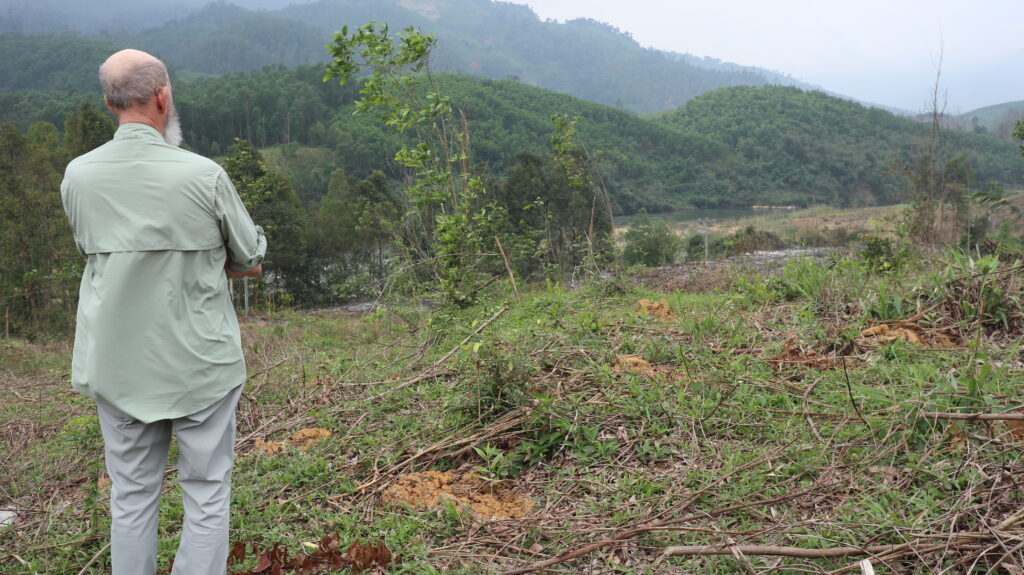
After a while we were satisfied this was the right spot. We were on one of the large chopper areas and we looked down over the river where some of the men swam, and which Delta Company crossed from its night lager. To me, this is the magic moment, when history comes alive.

Getting up to the A Shau Valley
We were on a schedule that day as we were continuing our journey to the A Shau Valley and Hamburger Hill. We spent another 45 minutes exploring the area as we listened to John and Mike’s stories. All in all, I was very happy to have discovered a new site, especially in the company of two men who had been there — especially one that is practically unknown in comparison to sites like Hamburger Hill, Khe Sanh and The Rockpile.
Blaze is a worthwhile visit, knowing the history behind the site helps to get a better understanding of its place in the history of the war, but it’s an easy quick stop on the way between Hue and A Shau Valley and I do recommend it for any history traveller.
How to get there
The site of FSB Blaze is located about 40 kilometers west of Hue along QL49 as you travel up to A Shau Valley. The site is located on the south side of the road. Access to the site does not require any type of 4WD vehicle.
GPS coordinates are: 16.285137, 107.364991
Credit for war time pictures: Loren Gee
